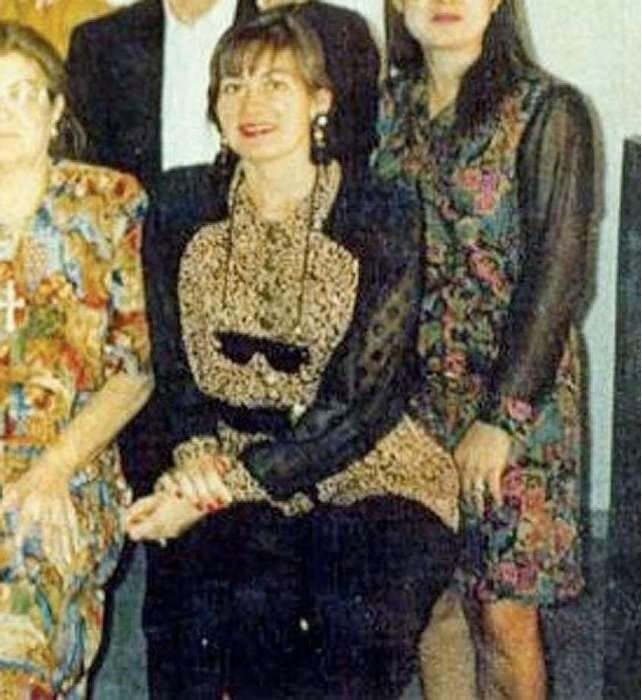Narcos who lost their lives for loving women from rival cartels
Among the legends of Mexican narcos, there is a place for failed loves that end in tragedy, , a lot of blood has been shed because of a wrong choice
Among the legends of Mexican narcos, there is a place for failed loves that end in tragedy. From people close to Chapo Guzmán to relatives of "El Mencho", of the Jalisco Cartel, a lot of blood has been shed because of a wrong choice.

Armando López 'El Rayo de Sinaloa' was in the eighties one of the closest friends and characters of Joaquín "El Chapo" Guzmán Loera. His execution caused a war to break out between the Sinaloa Cartel and the Arellano Félix Cartel, which dominated the Tijuana city plaza. López was murdered by orders of the Arellano brothers and his crime ended the truce that existed between the two criminal organizations.
Guzmán Loera's compadre had fallen in love with the forbidden woman, Enedina Arellano Félix, sister of the founders of the cartel. Faced with the pretensions of the 'Rayo de Sinaloa', the Arellano Felix brothers decided out of jealousy to kill the nearby capo. The tragedy was consummated and the message was clear for Guzmán Loera, any member of his group would not be well seen and less of wanting to fall in love with one of his relatives.
Carlos Rosales Mendoza alias "El Tísico", suffered the consequences of having fallen in love with Inés Oseguera, cousin of Nemesio Oseguera "El Mencho", of the New Generation Jalisco Cartel (CJNG). Rosales Mendoza was born on February 12, 1963, in the municipality of La Unión, in the state of Guerrero. He founded the criminal group called "La Empresa," which would later become "La Familia Michoacana," under the leadership of Osiel Cárdenas Guillén, leader of the Gulf Cartel, currently imprisoned in the United States.
The Michoacán family served as the armed wing of the Gulf Cartel and, along with Los Zetas, thwarted the operations of the Millennium Cartel, a group that controlled the production and distribution of narcotics in the state in 2000. But the Millennium Cartel was formerly called the Valencia Cartel, a criminal structure made up of 18 brothers. At one time Valencia, Osiel Cárdenas and Carlos Rosales Mendoza were friends and worked together.
However, the lack of love suffered by "El Tísico" for the betrayal of Inés Oseguera, cousin of Nemesio Oseguera Cervantes, "El Mencho"; ended with that society, it was even the main cause of the rupture between Los Valencia and the Gulf Cartel, which ultimately culminated in the creation of the most violent criminal organization currently operating in Mexico: the New Generation Jalisco Cartel.
It all began when "El Mencho" introduced his cousin Inés to Rosales. The two fell in love and had a son, this personal relationship boosted the business relationship between Los Valencia and the Gulf Cartel, as their cousin, Nemesio Oseguera, began his criminal career with the first. El Mencho's cousin fell in love with Armando Valencia, one of the heads of the Los Valencia Cartel.
On February 18, 2002, in the heart of Morelia, there was an armed attack in which Jorge Luis Valencia González, Armando Valencia's nephew, and three others died. According to reports, the attack was ordered by Carlos Rosales to kill his love rival but was unsuccessful. The conflict escalated after Osiel Cárdenas supported Rosales in his revenge against Los Valencia for Inés' betrayal. Cárdenas put 300 Los Zetas hitmen at his disposal to exterminate the Valencia family.
But the cartel of Los Valencia did not stay with their hands crossed and asked for help from the Cartel of Sinaloa. This rapprochement with the cartel of "El Chapo" was made by Ignacio "Nacho" Coronel, head of the square in Jalisco. And it was precisely this alliance that empowered the Millennium Cartel and gave it a greater presence in that state. The betrayal of El Mencho's cousin, Rosales' lack of love, and the violent power of the cartels caused a wave of violence in Jalisco and Michoacán that has not stopped so far.
Towards the end of the 1980s, when Héctor "El Güero" Palma and "El Chapo" were taking giant steps towards leadership in the drug world, Palma Salazar suffered the tragedy that marked the rest of his life. Venezuelan narco named Enrique Rafael Clavel Moreno had managed to infiltrate his organization on behalf of Félix Gallardo, who had not forgiven him for the betrayal.
Taking advantage of Palma's constant absences, the Venezuelan approached his wife, Guadalupe Lejía, to become his lover. The two, along with the children, stole from the Mexican capo two million dollars with which they fled to San Francisco in the United States, where Clavel murdered the woman, cut off her head, and sent her to the "Güero" in a box.
Approximately two weeks later, he sent him a video showing him throwing his four- and five-year-old sons, Nataly and Hector, from Concordia Bridge in Venezuela. Felix Gallardo was arrested in 1989. Journalist Raúl Monge, of Proceso magazine, ranked 1990 as the year in which Palma Salazar began his revenge. The first on the list was Clavel, who went to prison in Venezuela accused of the murder of the two children. There he was murdered.




